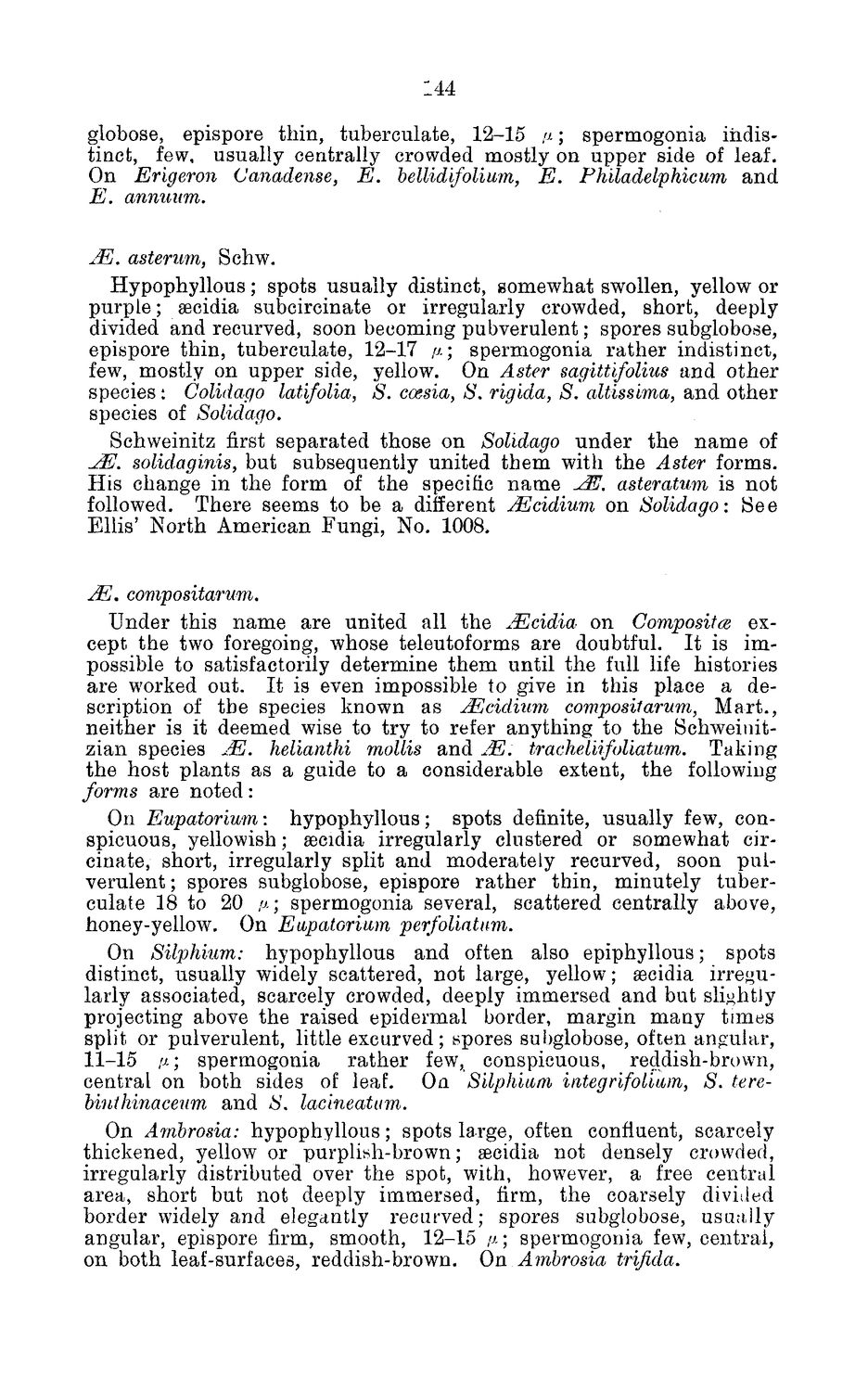| |
| |
Caption: Board of Trustees Minutes - 1884
This is a reduced-resolution page image for fast online browsing.

EXTRACTED TEXT FROM PAGE:
144 globose, epispore thin, tuberculate, 12-15 n; spermogonia indistinct, few, usually centrally crowded mostly on upper side of leaf. On Erigeron Canadense, E. bellidifolium, E. Philadelphicum and E. annuum. JE. asterum, Schw. Hypophyllous; spots usually distinct, somewhat swollen, yellow or purple; aecidia subcircinate or irregularly crowded, short, deeply divided and recurved, soon becoming pubverulent; spores subglobose, epispore thin, tuberculate, 12-17 n; spermogonia rather indistinct, few, mostly on upper side, yellow. On Aster sagittifolius and other species : Colidago latifolia, S. ccesia, 8, rigida, S. altissima, and other species of Solidago. Schweinitz first separated those on Solidago under the name of JE. solidaginis, but subsequently united them with the Aster forms. His change in the form of the specific name JE. asteratum is not followed. There seems to be a different JEcidium on 8olidago: »3ee Ellis' North American Fungi, No. 1008. JE. compositarum. Under this name are united all the JEcidia on Composite except the two foregoing, whose teleutoforms are doubtful. It is impossible to satisfactorily determine them until the full life histories are worked out. It is even impossible to give in this place a description of the species known as JEcidium compositarum, Mart., neither is it deemed wise to try to refer anything to the Schweinitzian species JE. helianthi mollis and JE. tracheliifoliatum. Taking the host plants as a guide to a considerable extent, the following forms are noted: On Eupatorium: hypophyllous; spots definite, usually few, conspicuous, yellowish; secidia irregularly clustered or somewhat circulate, short, irregularly split and moderately recurved, soon pulverulent; spores subglobose, epispore rather thin, minutely tuberculate 18 to 20 fx; spermogonia several, scattered centrally above, honey-yellow. On Eapatorium perfoliatum. On Silphium: hypophyllous and often also epiphyllous; spots distinct, usually widely scattered, not large, yellow; aecidia irregularly associated, scarcely crowded, deeply immersed and but slightly projecting above the raised epidermal border, margin many times split or pulverulent, little excurved; spores subglobose, often angular, 11-15 fi; spermogonia rather few, conspicuous, reddish-brown, central on both sides of leaf. On Silphium integrifoliam, S. terebinthinaceum and 8. lacineatum. On Ambrosia: hypophyllous; spots large, often confluent, scarcely thickened, yellow or purplish-brown; secidia not densely crowded, irregularly distributed over the spot, with, however, a free central area, short but not deeply immersed, firm, the coarsely divided border widely and elegantly recurved; spores subglobose, usually angular, epispore firm, smooth, 12-15 p.\ spermogonia few, central, on both leaf-surfaces, reddish-brown. On Ambrosia trifida.
| |